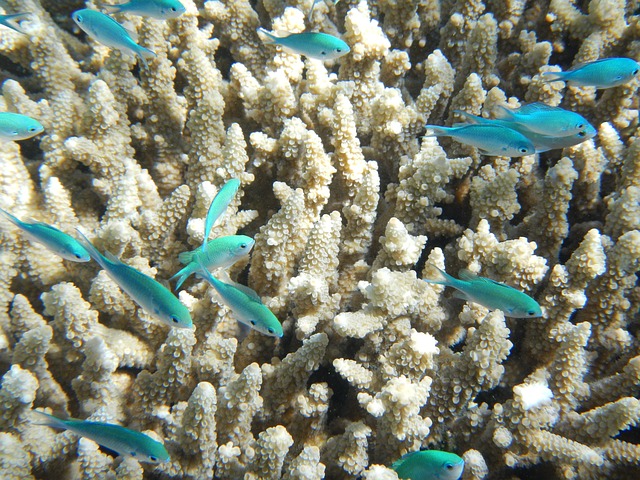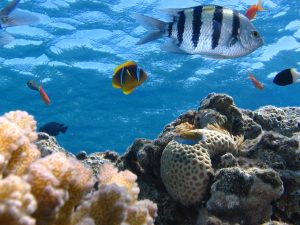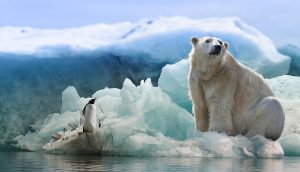Biodiversity, the intricate web of life on Earth encompassing all living organisms and their ecosystems, is facing an unprecedented crisis. Climate change, driven by human activities that release greenhouse gases into the atmosphere, is emerging as one of the most significant threats to biodiversity, pushing countless species towards the brink of extinction and disrupting the delicate balance of ecosystems worldwide.
Climate Change as a Driver of Biodiversity Loss
Climate change is altering the Earth’s ecosystems at an alarming rate, disrupting the delicate balance that has allowed life to thrive for millennia. Rising temperatures, changing rainfall patterns, and ocean acidification are directly impacting species and their habitats, leading to a decline in biodiversity. These changes are happening at a pace that many species cannot adapt to, leading to population declines and, in some cases, extinction.
Rising Temperatures
Many species have specific temperature tolerances, and as temperatures rise, they are forced to shift their ranges, adapt to new conditions, or face extinction. Species that cannot adapt quickly enough or are restricted by geographical barriers are particularly vulnerable. This is particularly evident in mountain ecosystems, where alpine species are being pushed to higher elevations as temperatures warm, leading to habitat loss and increased competition for resources. For example, the American pika, a small mammal that lives in high-altitude meadows, is experiencing range contractions due to rising temperatures, putting it at risk of extinction.
Changing Rainfall Patterns
Climate change is altering precipitation patterns, leading to more frequent and intense droughts in some regions and increased rainfall and flooding in others. These changes can disrupt plant and animal life cycles, reduce water availability, and alter the composition and structure of ecosystems. For instance, prolonged droughts can lead to the drying up of wetlands, impacting the species that rely on them for habitat and breeding grounds. Increased rainfall can lead to soil erosion, nutrient runoff, and changes in water salinity, affecting plant growth and aquatic life.
Ocean Acidification
The absorption of excess carbon dioxide by the oceans is leading to ocean acidification, which is harming marine life, particularly organisms with calcium carbonate shells and skeletons, such as corals, shellfish, and plankton. These organisms play crucial roles in marine ecosystems, and their decline has cascading effects on food webs and the overall health of the ocean. For example, coral reefs, often referred to as the “rainforests of the sea,” provide habitat for a vast array of marine species. Ocean acidification weakens coral skeletons, making them more susceptible to bleaching and damage, leading to the loss of this vital habitat and the decline of the species that depend on it.
Cascading Effects on Ecosystems
The loss of biodiversity, driven by climate change, has cascading effects on ecosystems, disrupting the intricate web of life that sustains them. Ecosystems rely on a complex interplay of species and their environment, and the loss of even a single species can have ripple effects throughout the ecosystem.
Loss of Keystone Species
Keystone species play critical roles in maintaining the structure and function of their ecosystems. Their decline or extinction can have disproportionately large impacts on other species and the overall health of the ecosystem. For example, the loss of apex predators, such as wolves or sharks, can lead to an overabundance of herbivores, which can overgraze vegetation, leading to habitat degradation and a decline in biodiversity. Keystone species also play vital roles in pollination, seed dispersal, and nutrient cycling, and their loss can disrupt these ecological processes, with far-reaching consequences for the ecosystem.
Disrupted Ecological Interactions
Climate change can disrupt ecological interactions, such as pollination, seed dispersal, and predator-prey relationships, which are essential for the functioning of ecosystems. For example, changes in flowering times due to altered temperature regimes can disrupt the synchronization between plants and their pollinators, leading to reduced pollination success and a decline in both plant and pollinator populations. Similarly, changes in migration patterns due to climate change can disrupt predator-prey relationships, affecting the abundance and distribution of species within an ecosystem.
Conclusion
Climate change is a significant threat to biodiversity, pushing countless species towards the brink of extinction and disrupting the delicate balance of ecosystems worldwide. The consequences of this loss are far-reaching, impacting not only the natural world but also human societies that rely on healthy ecosystems for food, water, clean air, and other essential services. Biodiversity loss can lead to a decline in ecosystem services, such as pollination, pest control, and water purification, which are essential for human well-being and economic prosperity.
Protecting biodiversity in the face of climate change requires a multifaceted approach. Reducing greenhouse gas emissions through a transition to renewable energy sources, improved energy efficiency, and sustainable land management practices is crucial to limit the severity of future impacts. This requires a global effort, with countries working together to reduce their carbon footprint and transition to a low-carbon economy.
Ultimately, protecting biodiversity in the face of climate change requires a fundamental shift in our relationship with the natural world. We need to recognize the interconnectedness of all living things and the importance of conserving biodiversity for the health of our planet and the well-being of current and future generations. By acting now, we can mitigate the impacts of climate change on biodiversity and ensure a future where both people and nature can thrive.





